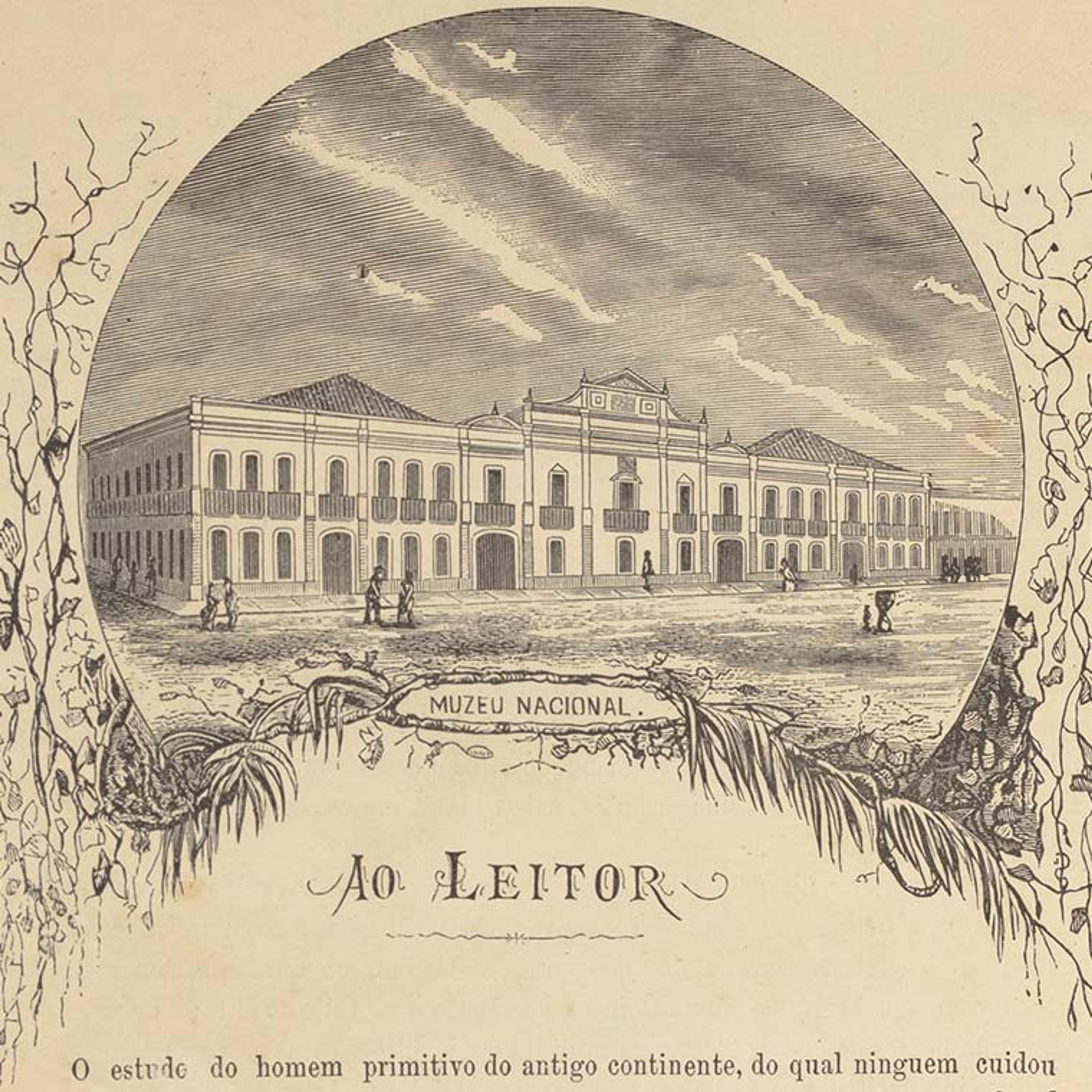Illustration of the original Museu Nacional building in the Campo de Sant'Ana, before it moved in 1892 to its current location, the Paço de São Cristóvão. From Alexandre José de Mello Moraes, Revista da Exposição Anthropologica Brazileira (Rio de Janeiro: Typ. de Pinheiro & Co., 1882).
When news broke on September 3, 2018, about the previous night's fire in Rio de Janeiro that consumed much of Brazil's Museu Nacional, I—along with many others throughout the world—felt a deep sense of tragedy at the loss of Brazil's heritage. That sadness would only deepen in the next few days as we all learned more about the Museu's vast holdings and as it dawned on those of us outside of the country that not only Brazilians, but humanity itself had suffered incalculably. To give a sense of the scale for New Yorkers: it's as if the blaze destroyed both The Met and the American Museum of Natural History.
Illustration of an exhibition gallery (Sala Rodrigues Ferreira) in Revista da Exposição Anthropologica Brazileira, 1882.
Gallery view. In Luis de Castro Faria, As exposições de antropologia e arqueologia do Museu Nacional : conferência(Rio de Janeiro: Departamento de Imprensa Nacional, 1949).
The news inspired me to look into the holdings of Watson Library and the Robert Goldwater Library for Museu Nacional publications, with the hope that presenting a few interesting finds from these books and journals would communicate a sense of the breadth and richness of the institution's collection and activities. So I offer these findings to honor the memory of the collections and research lost, but also to express an energetic hope that the Museu can recover, conserve what it can, and eventually be stronger than it was before.
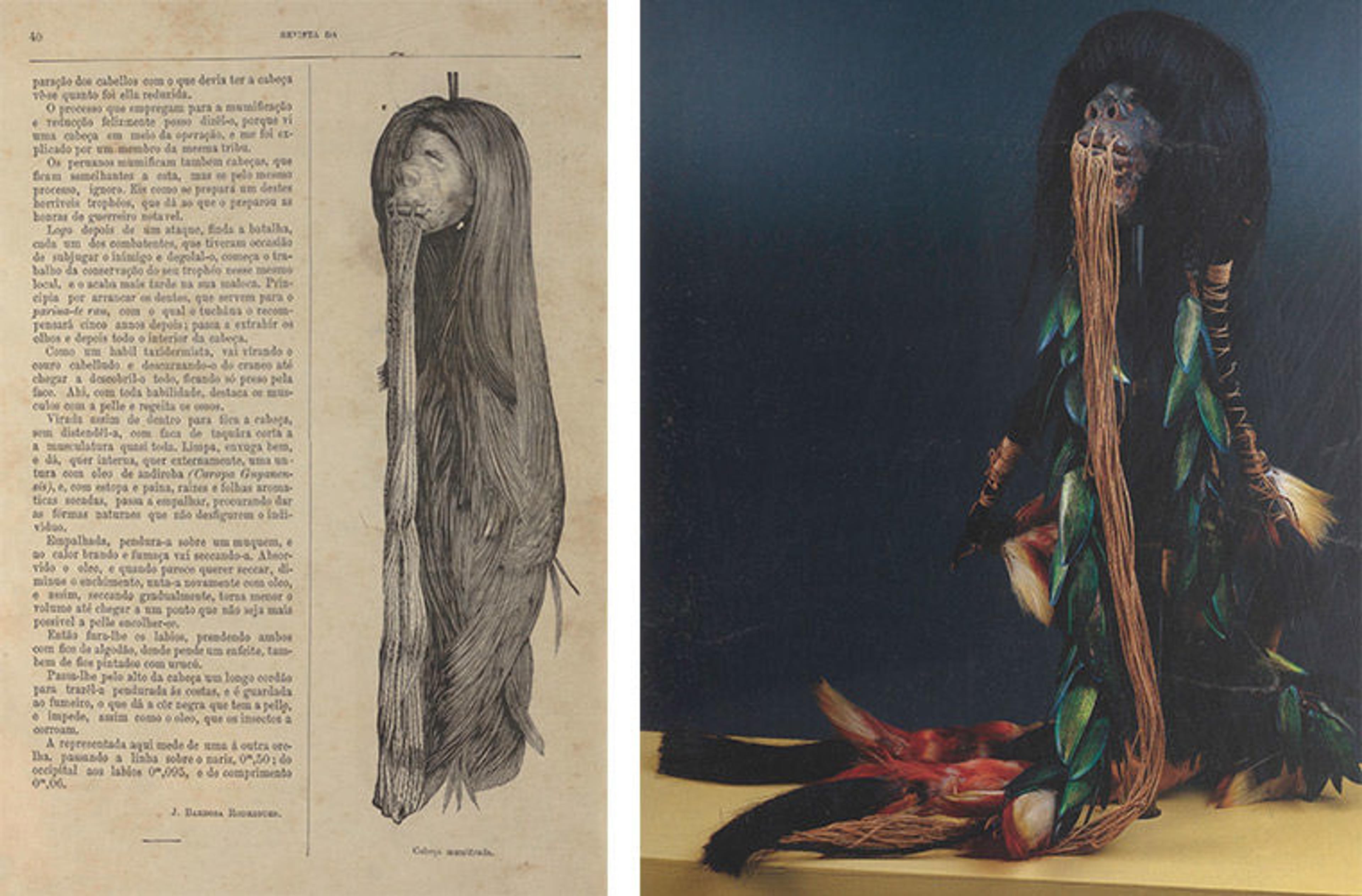
Mummified heads illustrated in publications from 1882 (Revista da Exposição Anthropologica Brazileira, left) and 2007 (Museu Nacional [Brazil] and Sergio Alex Kugland de Azevedo, O Museu Nacional, [(São Paulo, Brazil): Banco Safra], right).
The earliest Museu Nacional publications we own are two items from 1882—sixty-four years after its founding, in 1818, by King João VI of Portugal—both held in the Robert Goldwater Library, and address an anthropological exhibition held there at the time. One publication is a guide and the other a kind of magazine (revista) that includes a number of captivating images.
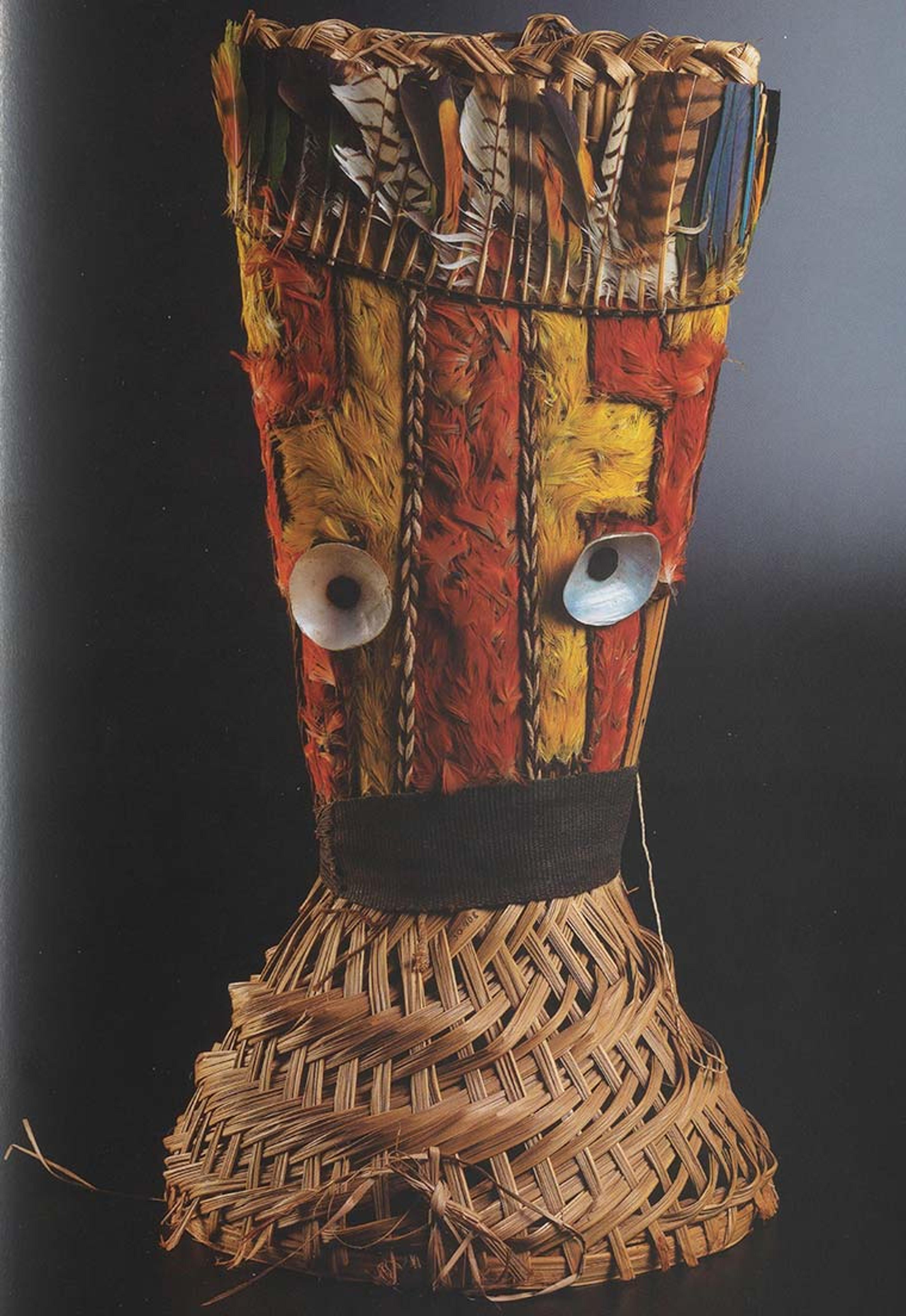
Máscara Trançada Revestida de Plumária Javaé (Javaé braided mask, plaited with feathers), from O Museu Nacional.
The Museu's anthropology and ethnology collections—naturally strong in Brazilian and South American peoples, and engagingly represented above by the Javaé feather-plaited braided mask—is only a portion of their collecting and research work.

Lithograph of a three-toed sloth celiac artery. From Museu Nacional (Brazil), Arquivos do Museu Nacional 29 (Rio de Janeiro: El Museu, 1927).
Geology, paleontology, botany, archaeology, and zoology are some of the other disciplines covered by the Museu, and I must admit that I was not expecting to come across several lithographs of the celiac artery of a three-toed sloth in a museum publication, however beautifully printed. (The celiac artery supplies oxygenated blood to several major and minor organs in the abdomen.) It's also worth noting that the Archivos do Museu Nacional is the oldest scientific journal of Brazil, first published in 1876.
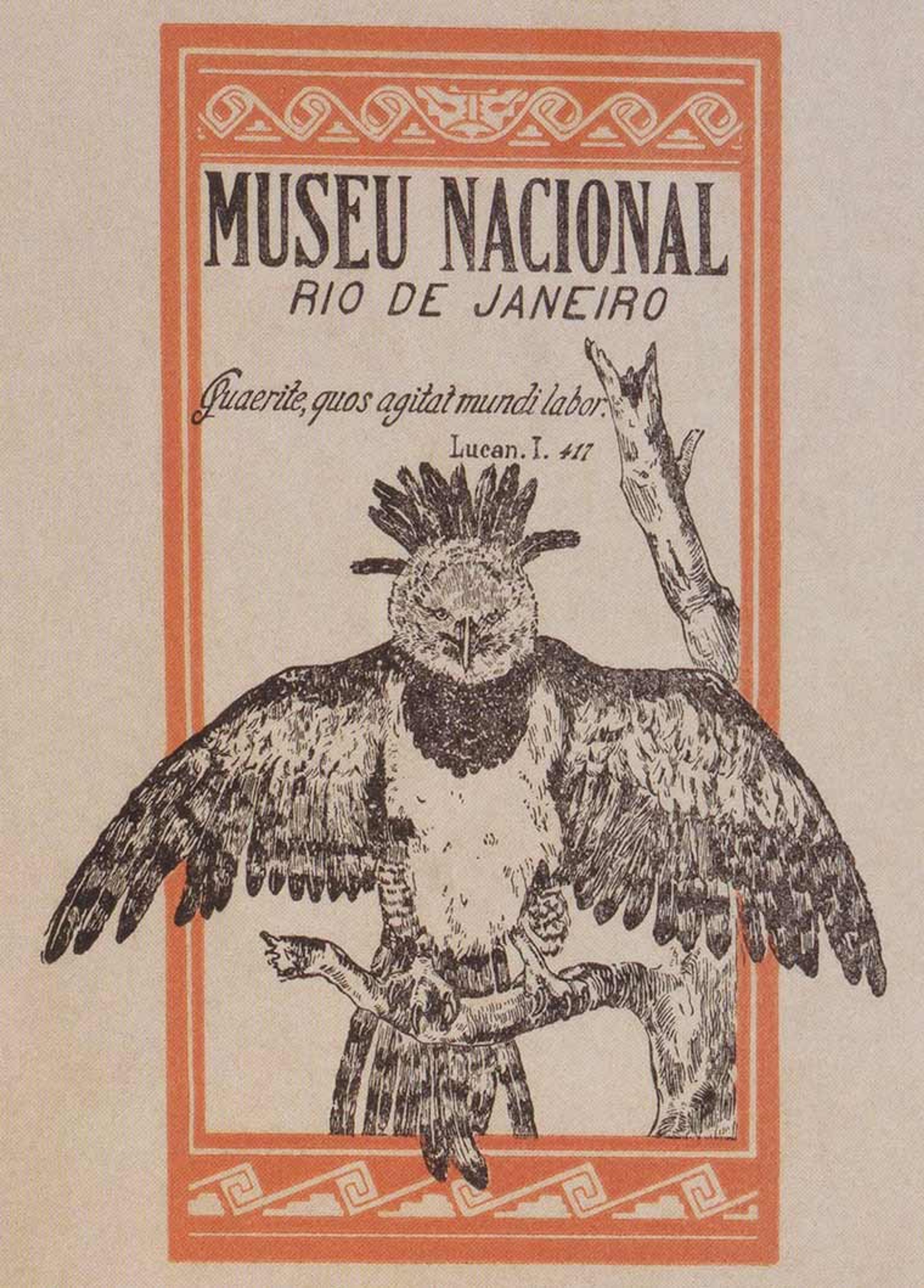
Ex-libris of the Museu, from Museu Nacional (Brazil), Boletim do Museu Nacional 2, no. 2 (March 1926).
As you might guess, librarians are drawn to those items related to books, archives, and research collections, so I was pleasantly surprised to encounter this design for a Museu ex-libris (bookplate) included in the March 1926 issue of the Boletim do Museu Nacional. At the suggestion of the director at the time, Dr. Arthur Neiva, the library adopted the Harpia harpyja—the harpy eagle, known in Brazil as the royal hawk (gavião-real)—for its ex-libris. According to the accompanying article, the framing of the eagle by Marajoaran decorations compositionally "brings together two of [the Museu's] capital activities: Zoology and Ethnology."
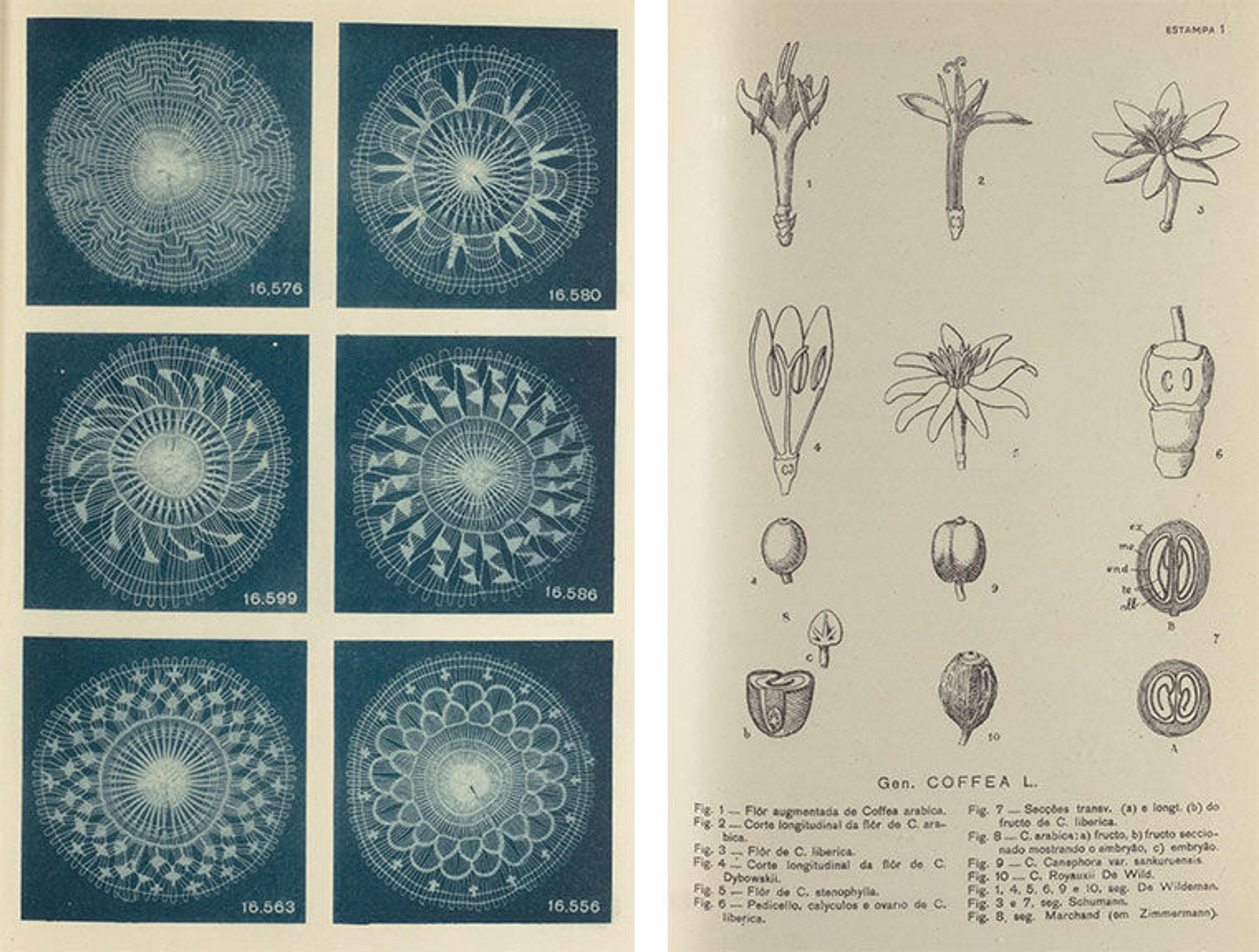
Paraguyan Ñanduti (left) and Coffee (right), plates from Boletim do Museu Nacional 3, no.1 (March 1927) and no. 4 (December 1927).
The 1927 volume of the Boletim is another demonstration of the Museu's breadth: the March issue includes a substantial set of notes on the delicate Paraguayan art of Ñandutí (embroidered lace), and the December issue is a 350–page special issue devoted to coffee. Published in the aftermath of the Grande Exposição de Café held in São Paulo in September 1927, it includes, among other topics, a secular song composed in Latin, articles on the soil and nutrition of coffee, and a recap of the "Coffee Congress."
Watson Library's holdings of Museu Nacional publications are modest but meaningful. While I understand that so much was irreplaceably lost in the September fire, I hope that the historical importance of the Museu Nacional means that their entire run of publications has survived in the distributed holdings of libraries worldwide.
Either way, may the government of Brazil, or at least those who hold the purse strings to fund a full recovery, find the will and resources to rebuild—and continue to support—an institution whose value and impact goes well beyond simple geopolitical borders. And may the most important lesson be learned by all, in hopes that future tragedies like this can be avoided: that the stewardship of our shared cultural and artistic heritage is everyone's responsibility.
